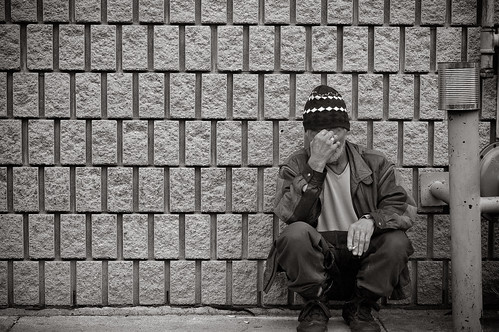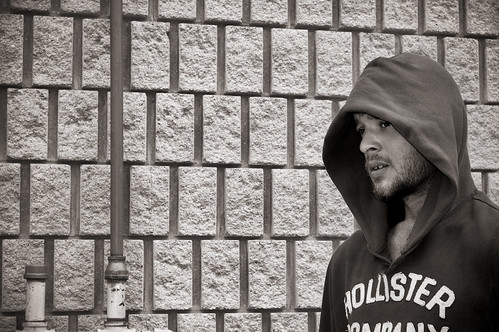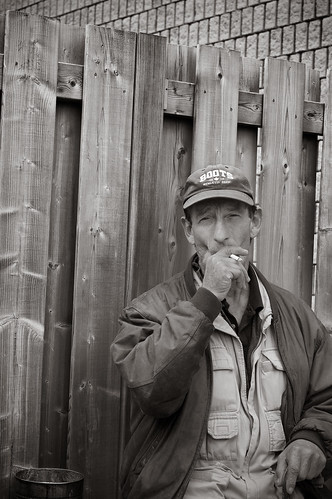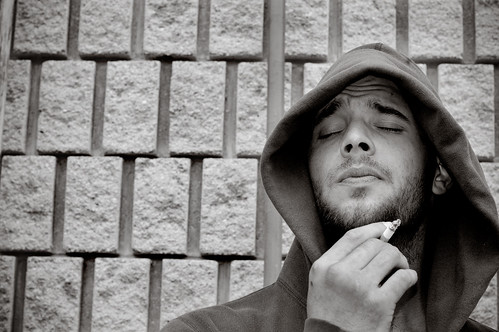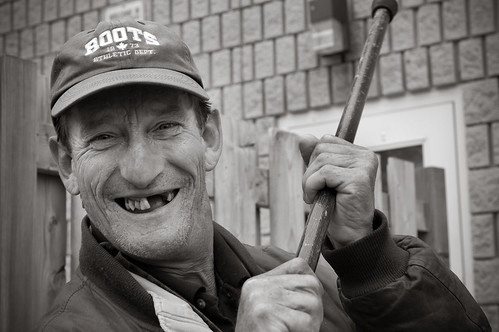I finally got my hands on Shelby Lee Adams: The True Meaning of Pictures, thanks to a very kind coworker with a zip (or something like that) membership. I watched it twice, I found it so thought-provoking. This is a movie that I think everyone should watch. But, as I’ve discovered, it’s a hard one to lay your hands on. None of the video rental stores in my town had it. If I didn’t have a friend with a zip membership, I would have had to buy it from amazon. So because it’s so hard to get and because it was so good, I’m going to attempt a real review of sorts here.
The central questions in the documentary seem to be: Does the work of Shelby Lee Adams perpetuate stereotypes of Appalachian people or challenge them? Are the subjects being exploited? To pursue answers to these questions, the film uses footage of photo shoots and interviews with Adams himself, academics, other photographers, and the people he’s spent 30 years photographing.
There are three main parts to the film. In the first part, we meet the Napier family, a family who lives very remotely and whose way of life is very similar to that of 100 years ago; the second part moves onto the religion of serpent handlers and preacher Wayne Riddle; and the third part introduces us to the Childers family, a family with three adult children who are developmentally challenged, and three other adult children who continued to live in the family home with their spouses.
Towards the end of the first part on the Napiers, Adams says, “People say I photograph the worst. I don’t photograph the worst. And with the Napiers… I don’t photograph them anymore.” When Adams started photographing the Napiers, there were 16 children in the family; since then, 12 of them have died.
The photography critics and academics in the film all seem very concerned with how the photographs are presented or labelled, whether they’re presented as documentary or fine art. They say some of his work would be acceptable in a fine art context but as documentary it’s far too troublesome. In particular, they were concerned that Adams bought the pig that the Napiers slaughtered in “The Hog Killing” and built the entire scene around his personal vision. The Napiers were far too poor to buy a pig.
The critics said that the picture essentially looks like a document but because Adams constructed the scene it isn’t. Personally I don’t see any problem with that; I thought the myth of the photo as document was debunked a long time ago. Even images that the critics might accept as “documentary” are not objective records — I thought that was common knowledge. Besides, the Napiers got to eat a pig they couldn’t afford on their own.
I have to say, the critics come off looking rather like assholes. Most of what A.D. Coleman had to say sounded reasonable right up until he said that ultimately, these are people he would not want to meet in a dark alley at night. He also said that Adams’s subjects are not educated enough, visually, to read what was really happening in the photos they helped create. His implication that Adams is exploiting his subjects reminded me of Pieter Hugo’s comment that there’s always an element of condescension in the view that people are being exploited.
Another critic, a sociologist I think, ends his part of the film saying, “This is deploying so many stereotypes that simply reaffirm that the poverty of the Appalachian is that person’s own fault; after all it’s got to do with centuries of violence, inbreeding, moon-shining, laziness and bad genes and bad socialization. I don’t have to worry about it. They’re doing it to themselves.”
By the end of the movie, two things are clear to me; even more so on the second viewing. One, Adams truly loves the people he photographs. He celebrates and mourns and feasts with them. The photos are a collaboration. And, two, what others see in the photos is more the result of what’s behind their eyes than what’s in front of them.
The best example of this is a woman who reports that she was once poor, but she’s pulled herself up, she’s gone to school and she’s not poor anymore. She says she’s just grateful that nobody took a picture of her when she was poor and showed it all over America. She goes on to say that Adams photographed her sister, in this picture. She says Adams disgraced her family with that picture, and she wonders why he couldn’t just take a pretty picture?
When I look at that picture? I see a beautiful image of a beautiful girl in beautiful light. For me, it’s pretty much the least troubling picture in the movie. But when the older sister looks at it, she sees a dirty, underfed girl with uncombed hair standing in the broken-down doorway of a house that must surely be a mess inside. I can only believe that for that woman, her background is something to be ashamed of, so all of what she sees in that picture is shameful. But I believe that Adams doesn’t see anything shameful. I believe he sees, and shows – as much as he’s able – dignity and mutual respect.
The first time I watched the film, I found Adams’s work troubling. I didn’t know what to make of it. Who were these people? What caused their scars? What are they saying (their accents were definitely a barrier for me)? But the second time around, I understood more of what they were saying, and instead of noticing their differences from me, I noticed their similarities. We’re all just living: having babies and eating and laughing and grieving and all the rest of it.
This seems the essence of Adams’s last word in the film: “I’m not trying to objectively stand back and say look at this. I’m subjectively engaging and involved. I’m pushing you, the viewer, and challenging you. That’s why I’m in there with the camera six inches away from Selena’s face. I think you need to he confronted with that. By getting in there with the camera, by creating some distortions, I’m hoping to make everyone think. What is our job here as a human being? Stop making judgments and experience life. I’m experiencing this environment. I’m trying to share with you, in an intimate way, that experience.” For me, he’s succeeded.
* * *
Just as I was finishing this post, and trying to find verification that I’d gotten Adams’s last quote right, I found this article, which is a far better discussion. And this one, which draws very different conclusions from mine.

